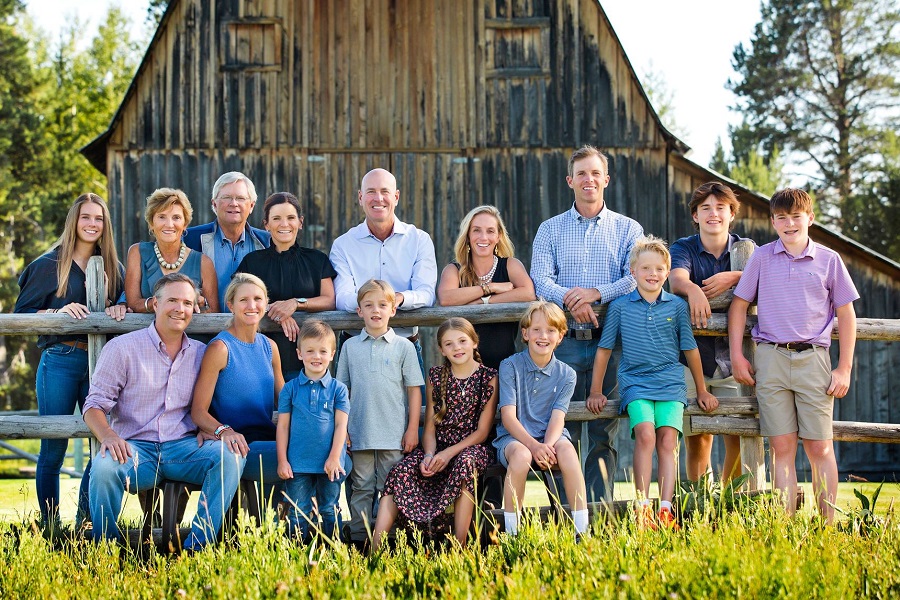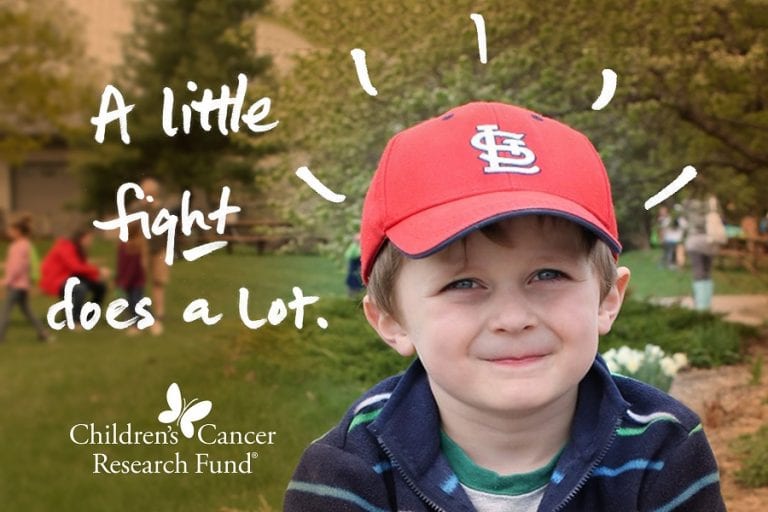Above: Fritz and Glenda Corrigan, pictured with their children and grandchildren.
In April 2021, staff at the University of Minnesota finished installing a piece of equipment called the Helios mass cytometer – a machine that will enable cancer researchers to glean more information from cells than has ever been available to them before.
John Wagner, MD, Founding Director of the Institute of Cell, Gene and Immunotherapies at the University of Minnesota explains it like this: Imagine that important data on our cells are like colors. With older technology, we could only see four or five colors simultaneously. But with the Helios mass cytometer, researchers can see between 50 and 100 colors simultaneously. This incredible cellular technology could have applications far beyond cancer. But in cancer research, this means researchers can significantly speed up the process of studying how certain immunotherapies fight cancer, without needing to export their samples to be processed through one of the few Helios mass cytometers in the country – they have access to their own, conveniently located on UMN’s Twin Cities campus.
“Having this technology at the University of Minnesota allows us to do things that most other research centers can’t do,” said Wagner. “In cancer, we are focused in manipulating the immune system so it targets cancer and kills it more effectively. This state-of-the-art piece of equipment will allow us to explore these changes in single cells, so we can more accurately see the impact these therapies have on the immune system.”
Incredibly, this groundbreaking piece of technology was fully funded by a nearly $1 million gift from one Minnesota couple – Fritz and Glenda Corrigan.
Fritz and Glenda have seen firsthand how science and research can have a significant impact on someone’s quality of life – and how speeding up the pace of discovery can save lives.
The Corrigans’ son suffers from cluster headaches, a rare – and therefore understudied – severe form of primary neurovascular headaches. In an effort to improve quality of life for their son and others whose lives are impacted by the unpredictable, debilitating pain, Fritz and Glenda asked their friend John Hallberg, then CEO of CCRF, to help find the world’s best neurologist who studies this rare affliction. Using CCRF’s reach in medical research, he identified Dr. Peter Goadsby, an Aussie neurologist studying cluster headaches at King’s College – London. They gave his research the injection of funding he needed to develop a monoclonal antibody that stops these painful headaches in their tracks.
Fritz and Glenda’s close friends, Norm and Diana Hageboeck, followed a similar path when they lost their daughter, Katie, to leukemia. For 40 years, funding research has bonded the two couples: Norm and Diana started Children’s Cancer Research Fund in 1981, and Fritz and Glenda have been steadfast supporters since the very beginning. Fritz served on the board of directors early on, and the couple has always made it a priority to continue Katie’s legacy.
“You just have to start someplace, you can’t do nothing,” Glenda said. “As a parent, you do what you can, and you start with your friends. That’s what we did, and that’s what Norm and Diana did with CCRF, and that’s what John Hallberg did on our behalf. Our CCRF investment in the Helios mass cytometer is partly payback to John, the Hageboecks, and CCRF.”
They were particularly drawn to the Helios mass cytometer because it won’t just touch one kind of childhood cancer – it will make research for all cancers more efficient. Fritz says his long career at Cargill and Mosaic taught him the importance of superior productivity.”
“The common thread between my work and this work is that it’s all about how you can do things more efficiently and productively. In my work, it’s about how you can produce more and better food from the same acre of land, and with this technology, it’s how you can get every little bit of information from a cell - that’s the value,” Fritz said.
He and Glenda say they worked hard for 50+ years to be able to fund research at this level, and they’re grateful to have found a project that aligns well with their interests and could have such a positive impact on so many lives.
“This project seemed to fit my curiosities because if you can multiply the people that can be treated, or if we can help researchers be more efficient at doing that, that’s what we want to do,” said Fritz. “We’ve seen the difference that research can make… you just have to have a result you’re trying to achieve, and a person who motivates you to dig in. For us, that was our son. For Norm and Diana, it was Katie.”
Norm and Diana, who founded CCRF in 1981, are always heartened to see how their daughter’s legacy continues to inspire generosity, even four decades later. CCRF started as a close-knit network of friends, but over 40 years has now grown into a national organization that has contributed $194 million to childhood cancer research.
“It’s people like the Corrigans who show us that Katie’s wish, to find better treatments and cures for the kids who came after her, is possible,” said Diana. “CCRF and cancer research as a whole wouldn’t be where it is today without the generosity and friendship of people like Fritz and Glenda.”
How you can help
You can support CCRF’s efforts to help bring new, better cancer treatments to kids. To learn more, please contact Kenna Dooley at 952-224-8486 or kdooley@childrenscancer.org, or make a donation today.




